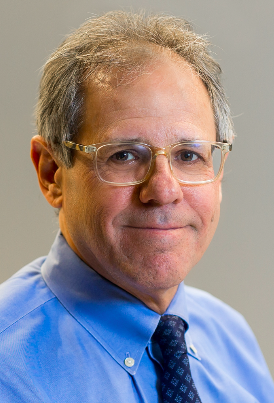In his latest book, “The Future of the Professions,” Richard Susskind, the celebrated legal tech guru and provocateur, joins forces with his son, Daniel, a lecturer in economics at Balliol College, Oxford, to chart the decline of the professions. While Richard has generally focused on law in his previous books, father and son define “profession” broadly here, sweeping in everyone from doctors, lawyers and accountants to architects, journalists and the clergy. The common denominator is their role as conduits for sharing expertise in society. “[A]ll professions,” the Susskinds write, “are a solution to the same problem – that none of us has sufficient specialist knowledge to cope with all of our daily challenges.”
So what’s in store for the professions? No need for a spoiler alert here. Father and son state it right up front: Doom! “These are the people, practices, and institutions that we claim will largely be replaced in a post-professional society.”
That’s not particularly surprising from Richard. While Daniel is new to the family business, his dad published the provocatively titled “The End of Lawyers” in 2008. In keeping with his tech background – he is longtime IT advisor to the Lord Chief Justice of England and Wales and the president of the prestigious Society for Computers and Law – he and Daniel say that the main driver of the demise of the professions is technology.
Taking a peek at the ending doesn’t make this work any less worthwhile. The Susskinds are capable guides for a scholarly tour of the demise they foresee. They begin by laying out the terms of the “Grand Bargain” – a pact between experts and society under which professionals are entitled to provide their services. They quote, among others, a nifty passage from the surgeon/writer Atul Gawande: “The public has granted us extraordinary and exclusive dispensation to administer drugs to people, even to the point of unconsciousness, to cut them open, to do what would otherwise be considered assault, because we do so on their behalf – to save their lives and provide them comfort.” (If you’re a lawyer, just substitute “legal advice”
for “drugs.”)
Along the ride from Grand Bargain to death knell there’s lots of good stuff, though like many “Big Idea” books, things get a little repetitious as the authors grope for new ways to say the same thing. Still, all in all, it’s a worthwhile trip.
As you’ll see below, the lynchpin of the book is a chart, “The evolution of professional work.” Placing knowledge at the heart of the professions, they ask, “Might there be different and better ways of producing knowledge and making it available in society, methods that might not directly involve the traditional professionals at all?”
Yes, they explain, there just might be, and those methods are fast upon us. Just look at the evolution chart.
The professions, say père et fils, are moving, in different ways and at different paces, from left to right along the evolutionary continuum from craft to externalization. This is not commoditization, a word the Susskinds dismiss as “unhelpful,” but an inexorable progression driven by winds stirred up by “market forces, technological advances, and human ingenuity.” For lawyers, that means that the figures of lore – Rumpole, Atticus Finch – professionals who handcrafted solutions like half-starved artists slaving away on blank canvasses, may be an endangered species. It’s not that the bespoke approach to service delivery will disappear like the citizens in “The Leftovers” – the Susskinds leave themselves a bit of a backdoor – but a “significant number of tasks that used to require handcrafting are already being done very differently.” Think about the leap from Bartleby, Melville’s flesh-and-blood Wall Street scrivener, to ContractExpress5, ThomsonReuters’ fleshless-and-bloodless document assembly software.
From craft, we move through standardization (the routinization of expertise) and systemization (the use of more sophisticated tools and technologies to supersize the benefits of standardization) on to externalization – the stage at which practical expertise goes live, so to speak, and becomes available online to nonspecialists. The three modes of externalization will be painfully familiar to at least one of the professions, journalism, which has experienced them all as its traditional model has blown apart at the seams: for-charge online services, no-charge online services and the “commons” approach, which is the wiki-style model where everyone can jump into the online pool and use, reuse and improve shared material.
There’s much more, including many specific examples and a bushel of nuance. I can’t do it justice here. Suffice to say, you will recognize your own work experiences on almost every page of a journey that begins and ends with two possible futures.
“The first is reassuringly familiar. It is a more efficient version of what we already have today,” write the Susskinds. “The second future is a very different proposition. It involves a transformation in the way that the expertise of professionals is made available in society.”
As for dear old Atticus Finch? I’m afraid there’s no nice way to put it.
“In the long run, the second future will dominate, we will find new and better ways to share expertise in society, and our professions will steadily be dismantled.”
In other words, he’s toast.
Published March 3, 2016.



